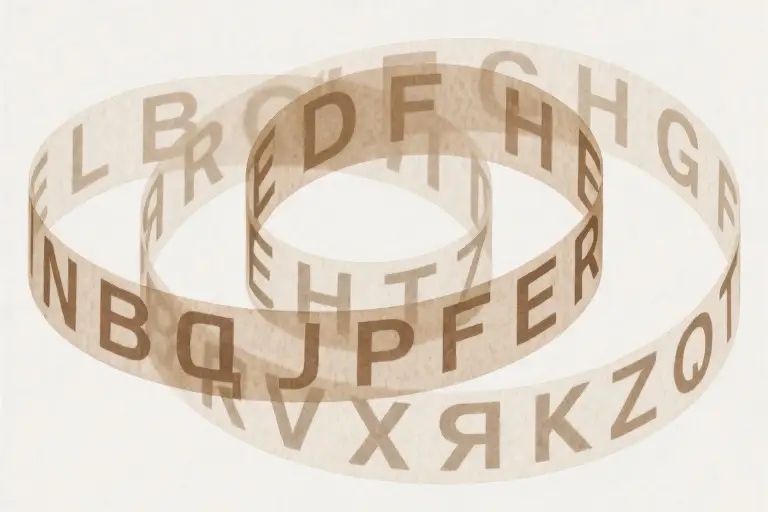I have a confession to make. Despite what my colleagues might tell you, I’m far from fluent in Spanish – and that reality keeps me up at night.
Just last month, our Madrid client replied to my email with “¡Tu español es perfecto!” while I was secretly using DeepL to decode their response. The cognitive dissonance is real: professional compliments piling up in my inbox versus the cold sweat breaking out when my Mexican barista asks a follow-up question about my coffee order.
This gap between perception and reality reveals something fundamental about adult language learning. When colleagues hear me nail basic conversations or use industry-specific vocabulary, they assume C1-level fluency (Common European Framework of Reference for Languages). The truth? I’m solidly B1 – able to handle predictable work situations but lost when the conversation turns to, say, Andalusian politics or the subjunctive mood in conditional clauses.
Three factors create this fluency illusion:
- The 3000-Word Mirage: Research shows daily conversations typically use just 3000 core words, creating false confidence
- Accent Privilege: My decent pronunciation masks grammatical errors
- Professional Context: Narrow work vocabulary creates domain-specific competence
The wake-up call came during a Barcelona conference when a simple “¿Dónde está el baño?” earned enthusiastic praise while my attempt to explain blockchain concepts dissolved into hand gestures. That moment crystallized my dilemma: Can structured language courses bridge this gap, or is true fluency just an expat fantasy?
Here’s what my Duolingo streak won’t show you: After two years of intermittent study across three countries, I could discuss Spanish wine varieties but couldn’t conjugate irregular verbs to save my life. This isn’t just my story – it’s the reality for millions trying to learn Spanish as adults while balancing careers and responsibilities. The real question isn’t about talent or effort, but about designing learning systems that account for our cognitive limitations and busy lives.
The Fluency Illusion
There’s an uncomfortable truth most intermediate language learners eventually confront – what feels like fluency to others often masks glaring gaps in our actual competence. My Spanish journey perfectly illustrates this phenomenon. While colleagues compliment my “impressive fluency,” I still cringe remembering the time I told a Madrid waiter “Espero que tú estás bien” (incorrect subjunctive) instead of “Espero que estés bien.”
Why Intermediate Speakers Get Overestimated
Three key factors create this fluency illusion:
- The 3000-Word Mirage: Research shows daily conversations typically require just 3000-5000 words. When we smoothly use this limited set, listeners assume broader competence. My American coworker didn’t realize I couldn’t discuss healthcare reform when praising my “native-like” small talk.
- Pronunciation Privilege: Clear accent often gets mistaken for depth. After perfecting my Spanish ‘rr’ roll during those Barcelona summers, even incorrect grammar gets overlooked. The human brain strangely equates good sounds with good syntax.
- Contextual Camouflage: In predictable situations (ordering tapas, giving directions), rehearsed phrases create false confidence. Problems surface in spontaneous discussions – like when my Mexican professor asked about Catalan independence and I froze like a deer in headlights.
The Self-Awareness Paradox
CEFR level B1 speakers (like current me) inhabit a peculiar space. We can:
- Handle travel situations effortlessly
- Discuss familiar topics comfortably
- Write simple connected texts
Yet we painfully recognize our:
- Limited vocabulary range (ever tried describing car engine problems in Spanish?)
- Grammatical inconsistencies (that stubborn subjunctive mood)
- Cultural knowledge gaps (why Spaniards really eat dinner so late)
This cognitive dissonance explains why language partners often rate our skills higher than we do. Their perspective lacks our intimate awareness of every hesitation, vocabulary workaround, and grammatical shortcut.
Breaking the Illusion
The turning point came during a Buenos Aires business dinner. After smoothly discussing Argentine wine regions (a practiced topic), the conversation turned to local politics. My carefully constructed fluency crumbled as I:
- Misused conditional tenses
- Defaulted to simple vocabulary
- Missed nuanced jokes
That humbling experience revealed an essential truth: real fluency isn’t about performing in comfortable scenarios, but adapting to unfamiliar ones. It’s the difference between having a script and truly speaking a language.
This awareness ultimately drove me to structured learning – but that’s a story for the next chapter. For now, I’ll leave you with this: if you’ve ever felt like an impostor when praised for language skills, you’re not alone. That discomfort might be the most authentic part of your learning journey.
My Continental Classroom
Survival Spanish: When Pictures Saved the Day
The first time I truly needed Spanish outside a textbook was at a tiny tapas bar in Barcelona. After confidently ordering “un vino tinto” (red wine), I froze when the waiter rapid-fired questions about my food preferences. My eyes darted across the menu like a tourist watching a tennis match – Jamón ibérico? Boquerones? My survival strategy? Pointing enthusiastically at whatever had the most appetizing photo. This became my unspoken rule: if the menu item didn’t have an accompanying image, it didn’t exist in my culinary vocabulary.
What started as a humorous crutch revealed an uncomfortable truth about language learning for adults. We compensate for gaps in knowledge with context clues (those menu pictures), educated guesses (pointing at random), and sheer optimism (smiling through misunderstandings). While this works for basic survival, it creates what I call “restaurant fluency” – the illusion of competence that shatters when conversations move beyond food and weather.
The Scottish Curveball
My confidence took another hit during a London board meeting with Scottish clients. Having practiced “proper” British English for months, I wasn’t prepared for the Glaswegian accent rolling through the conference room. Phrases like “We’ll need that by the back of eight” (translation: 7:40) left me mentally translating while missing the next three sentences. This wasn’t a vocabulary issue – it was my brain’s inability to process unfamiliar phonetic patterns at native speed.
Language learning plateau often manifests this way: you’ve mastered textbook pronunciation, but real-world dialects expose the brittleness of classroom learning. That meeting taught me that intermediate learners need targeted listening practice with regional accents – something most generic language courses completely overlook.
Academic Shock Therapy
The final wake-up call came during my MBA program in California. Group discussions about case studies required precise business vocabulary and quick analytical responses – a far cry from ordering tapas. I’d prepared by memorizing financial terms, but kept stumbling over verb conjugations mid-sentence. Nothing highlights grammatical weaknesses like trying to explain leveraged buyouts while mixing up past subjunctive tenses.
This three-continent journey revealed critical patterns about language learning for adults:
- Context Determines Fluency Perception: My “impressive” restaurant Spanish masked glaring gaps in other areas
- Accent Adaptation is a Separate Skill: Understanding textbook pronunciation ≠ comprehending regional dialects
- Cognitive Load Matters: Complex topics demand automatic grammar mastery you can’t fake
Each experience pushed me toward a difficult realization: sporadic, context-dependent learning creates uneven abilities. To progress beyond intermediate plateaus, I needed structured training that addressed all language components systematically. That epiphany eventually led me to the classroom door – but not before one last disastrous attempt at self-teaching involving a Spanish soap opera and three packs of highlighters…
(Transition to next chapter hint: The moment I admitted needing professional help came when a language exchange partner gently suggested my verb conjugations were “creative”)
When I Finally Went to School
After years of cobbling together Spanish phrases across three continents, I walked into a Madrid language school with equal parts hope and skepticism. The glossy brochure promised “fluency in 12 weeks” through their “scientifically proven immersion method.” My reality check came during the placement test when I couldn’t conjugate “venir” correctly in the past subjunctive.
The Structure I Never Knew I Needed
Those thrice-weekly classes became my linguistic lifeline. For the first time, someone explained why Spanish verbs behave like chemical elements – with predictable patterns if you understand their “families.” Our teacher diagrammed the -ar/-er/-ir verb matrix on the whiteboard, and suddenly years of guesswork crystallized into rules. By week six, I could fluidly switch between present perfect and imperfect tenses – something my travel phrasebook never taught.
Yet the classroom’s controlled environment created its own illusions. During scripted role-plays at the café, I’d flawlessly order “un cortado y dos medialunas.” Then reality would strike at actual Spanish bars when the waiter replied with Andalusian slang at machine-gun speed. My classmates – mostly fellow expats – and I developed a shared dialect that worked beautifully… within our classroom walls.
The Social Practice Gap
The school’s conversation club revealed harder truths. Local participants politely tolerated our textbook Spanish, but real connections only sparked when we abandoned perfect grammar for emotive hand gestures and borrowed English words. One Thursday evening, a linguistics student named Lucía gave me the key: “You all speak like our news anchors. We speak like this -” she demonstrated with a rapid-fire story full of “vale” and “pues.”
This disconnect became measurable. My final exam scores placed me at solid B2 (CEFR level), yet my “street comprehension” barely reached A2. The structured learning gave me architectural knowledge of Spanish, but like studying blueprints without visiting the building.
Hybrid Learning Emerges
Midway through the course, I began supplementing with:
- Telenovela Tuesdays – Watching “El Ministerio del Tiempo” with Spanish subtitles
- Grocery Store Drills – Forcing myself to ask butchers about meat cuts
- Grammar Gamification – Using Kwiziq’s AI to target weak spots
The combination worked better than either approach alone. Classroom learning provided the framework, while real-world interactions installed the plumbing and wiring of actual communication.
Now when colleagues compliment my Spanish, I smile but mentally note which verb tenses I avoided in that conversation. The school gave me tools, but the construction site remains active – and that’s okay. Because unlike my scattered continental learning, I finally have blueprints to guide the work.
Keeping the Language Alive
The 5-Minute Daily Journal Method
Maintaining language skills requires consistency more than intensity. The 5-minute daily journal method became my anchor when work deadlines threatened to derail my Spanish practice. Here’s how it works:
- Morning Prep (1 min): Keep a notebook by your coffee machine. While brewing your morning cup, write today’s date in Spanish along with one weather observation (“Hoy está nublado en Londres”).
- Commute Capture (2 min): During your subway ride or morning walk, mentally compose two sentences about your schedule. Jot them down upon arrival using only known vocabulary (no dictionary checks).
- Evening Echo (2 min): Before bed, read aloud your morning entry and add one reflection in past tense (“Hoy fue un día productivo”).
This micro-habit serves multiple purposes: it activates vocabulary recall, practices verb conjugations in context, and creates tangible progress evidence. After 30 days, you’ll have a personalized phrasebook of frequently used expressions.
Shadowing Technique: Three Progressive Stages
Shadowing (repeating audio immediately after hearing it) transformed my pronunciation and listening comprehension. The key is gradual progression:
Stage 1: Cookie-Cutter Shadowing
- Use slow Spanish podcasts (like “News in Slow Spanish”)
- Pause after every 3-4 words to parrot the speaker
- Focus only on replicating rhythm and vowel sounds
Stage 2: Delayed Echo
- Increase audio speed to normal
- Allow a 2-second delay before repeating
- Begin noting down unfamiliar words between sessions
Stage 3: Conversational Shadowing
- Use unscripted content (YouTube vlogs work well)
- Add personal reactions in Spanish (“¡Qué interesante! Nunca pensé eso”)
- Record yourself monthly to track intonation improvements
Pro tip: Combine this with household chores – I perfected my rolled R’s while folding laundry.
Finding Your Virtual Language Partner
Language exchange apps often lead to ghosting or unbalanced conversations. Through trial and error, I developed this matching framework:
The 3C Compatibility Test
- Calendar Sync: Partner should be in adjacent time zones (max 3-hour difference)
- Content Alignment: Share at least two non-language interests (e.g., cooking + indie films)
- Commitment Device: Agree on a weekly “no-show penalty” (like donating $5 to a cause)
Our current Discord community uses a “Tándem Tuesday” system:
- 25 mins Spanish → 25 mins English
- Weekly theme (this week: workplace vocabulary)
- Shared Google Doc for corrections
The magic happens when relationships evolve beyond language practice. My Spanish partner now sends me voice notes about her abuela’s recipes – complete with regional slang no textbook would teach.
Maintenance Toolkit Essentials
These digital tools became my language gym equipment:
- Speechling (Free tier): For getting native speaker feedback on pronunciation
- Tandem (Free): The best-organized language exchange platform
- DeepL Write (Paid): More nuanced than standard grammar checkers
- SpanishDict (Free): Verb conjugation drills with progress tracking
- Notion Template (Custom): Tracks vocabulary retention rates
Remember: The goal isn’t perfection, but preventing skill erosion. Even on my busiest weeks, completing just the 5-minute journal and one shadowing session keeps the neural pathways active. As my abuelo de práctica likes to say: “Poco a poco se va lejos” – little by little, you go far.
What’s your most creative language maintenance trick? Our community is collecting real-world strategies – share yours below!
Keeping the Language Alive
My Duolingo streak glows proudly at 147 days – a small victory in the grand scheme of language maintenance. But let’s be honest, those five-minute daily lessons alone won’t preserve hard-earned Spanish skills. Through trial and error across three continents, I’ve compiled these battle-tested techniques to prevent language atrophy.
The 5-Minute Newspaper Method
Every morning with my coffee, I scan El País using this three-step approach:
- Headline Hunt (1 min): Identify 3 key vocabulary words from titles
- Lead Paragraph Decode (3 min): Read just enough to grasp the quién-qué-cuándo-dónde
- Mental Translation (1 min): Summarize one article aloud in English
This ritual serves dual purposes – staying informed while reinforcing connectors like a pesar de (despite) or no obstante (nevertheless) that formal courses often neglect. The limited time commitment makes it sustainable even during hectic workweeks.
Shadow Training with Podcasts
When jogging or commuting, I practice this progressive technique with Radio Ambulante episodes:
| Phase | Focus | Duration |
|---|---|---|
| 1 | Mimic rhythm | 2 weeks |
| 2 | Sync words | 3 weeks |
| 3 | Anticipate phrases | Ongoing |
Start by simply echoing the podcast’s musicality. As your mouth muscles adapt, gradually align words until you’re half a beat behind the host. The final stage – predicting their next phrase – forces active processing rather than passive listening.
Virtual Language Partners
The Español con Aliados Discord server connects learners for:
- Voice Channels: Weekly debate nights on topics like teletrabajo (remote work)
- Writing Sprints: Collaborative storytelling in breakout rooms
- Grammar Cafés: Crowdsourcing explanations for tricky constructs
What makes this work? The accountability of scheduled sessions replicates classroom structure, while the global participant mix exposes you to Mexican slang, Argentine idioms, and Castilian formalities.
Maintenance Reality Check
My current toolkit combines these elements:
pie
title Weekly Spanish Maintenance
"News Method" : 35
"Podcast Training" : 25
"Virtual Exchanges" : 30
"Duolingo" : 10Notice how formal study apps now occupy the smallest slice? That’s the paradox of intermediate language learning – the further you progress, the less textbooks help.
Your Turn
What’s working (or failing) in your language maintenance routine? Share your:
- Most effective 5-minute practice
- Favorite shadowing material
- Digital community recommendations
Next week, I’ll expose the truth about language school marketing claims in The Language Course Survival Guide. Until then, remember: fluency isn’t a destination, but a daily commute.
Current streak: 148 days and counting…





